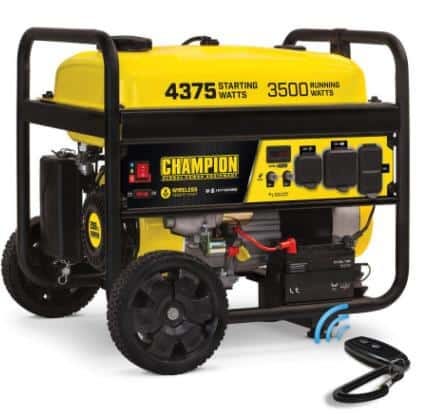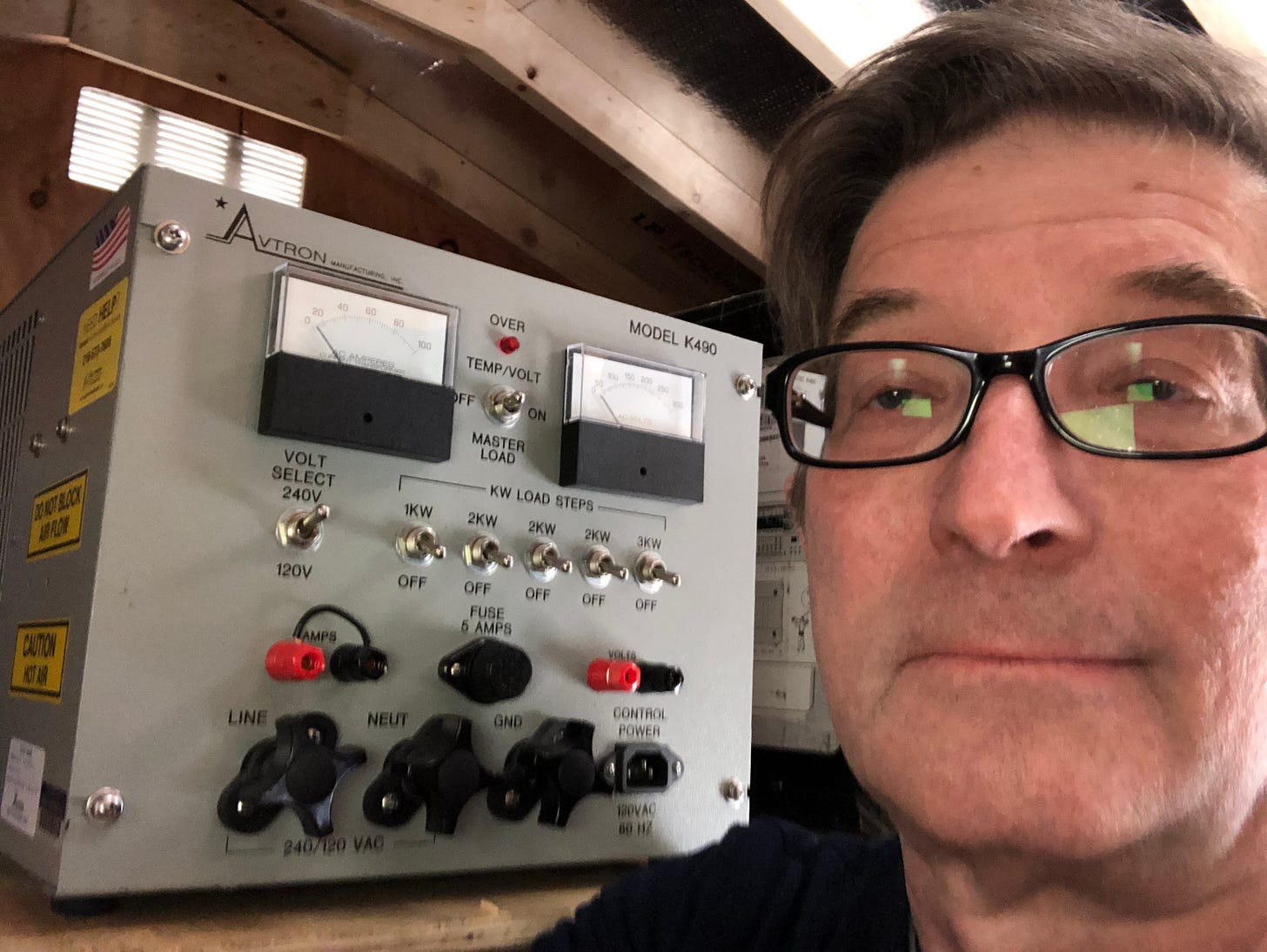Dear Mike,
Are the so called RV-Ready generators any quieter than the contractor generators you're always talking about? The salesman at the store says they are, but I'm a little leery of spending my hard-earned money on something that's going to be too loud to use while boondocking. I've already added solar panels, but I might need to run a generator for an hour a day to charge my batteries if the sun doesn't shine. I invested in solar for the quiet, so I can't imagine listening to a loud generator even for an hour or two every day. I camp to enjoy the peace and quiet, not to hear motors running. Any suggestions on what to look for in a generator? —Sam & Alice
Dear Sam & Alice,
With many of our favorite campgrounds shut down due to COVID-19, lots of you are turning to boondocking for your camping adventures this season. And as you can imagine, that doesn't mean you'll be the only one in that neck of the woods. So I think it's great that you're thinking about preserving the quiet for everyone else to enjoy as well.
And you're in luck because I've just begun testing several types of generators for noise level. In a few weeks I'll create a video showing how I test generators for noise pollution and comparing the calibrated noise levels for your own judgment. Note that I am an audio engineer (in addition to a few other things) and qualified to teach all about SPL (sound pressure level) and decibel (dB) levels at college level, so I'm well-equipped to measure and discuss them. For a previous article I wrote that includes the extended math of how SPLs are measured, read more HERE.
I break portable generators down into five basic classes, which I'll discuss briefly here. Note that standard measurement practice is to use a calibrated decibel meter set to the A-weighted scale and slow response, positioned 23 feet (7 meters) away from the generator in an open space.
Contractor generators:
These are the cheapest and least desirable class of generator for camping since they generally have no sound insulating panels, and use pretty cheap mufflers. Hey, if you have a bunch of other machinery running at a construction site, what's a few more dBs of noise in the big picture? However, you can hear these running in the woods from hundreds of yards away, so they're generally shunned from camping areas. Here's what the noise specs are for a typical contractor grade generator. I'm showing a Generac 249344 GP Series 3600W for example which is listed as 69 dBA from 23 feet.
"RV Ready" open-frame AC generators:
These so-called RV Ready generators are basically contractor open-frame generators dressed up a bit. They will include a TT-30 outlet, meaning you don't need a twist-lock adapter to connect it to your shore power cord. And many will include some sort of over-voltage spike protection, which is essentially a surge protector built into their outlets. This one from Champion also has better voltage and frequency regulation than your garden variety contractor genny, as well as an electric start via a remote control, which makes it easy to start from inside your RV when you want to crank up your coffee maker. All are good ideas, but none of them make the generator any quieter to run while boondocking. For example, here's the info on a Champion 3,500 watt generator with the following noise specifications: From 23 ft., the noise level is 68 dBA.
Closed frame DC inverter generators:
While the first two generators are actually dynamos (an AC generator that's spun at a constant RPM by a gas engine with a speed governor to keep the frequency close to 60 Hz), inverter generators are actually 3-phase DC alternators which produce around 12 volts DC, then use a built-in pure-sine wave inverter to make 120 volts AC at 60 Hertz. The beauty of this type of technology is that the engine doesn't have to run at a constant speed.
Unlike an AC dynamo generator that needs to run at 3,600 RPM just to make 60 Hz AC for even at a small load, an inverter generator can be set to an "eco-throttle" mode, which lets the engine idle when not much power is needed, but then rapidly comes up to full speed when more output wattage is required. I'm using the Honda EU3000-i as an example here. It's rated at 50 dBA noise level with a 1/4 load at 23 feet. But when you get up to 1/2 load the engine speed does increase with a corresponding increase in noise level to around 56 dBA. While the difference between a 68dB SPL contractor generator and a 50dB SPL inverter generator on idle doesn't look like much on paper, that 18 dB difference is huge, around 63 times as much acoustic noise. And that sounds at least 3 to 4 times louder to the human ear.
CarGenerator™:
While not technically a portable generator at all, it's basically the final part of an inverter generator that makes really clean (less than 3% distortion) pure sine waves. It works by first installing a heavy-duty connector onto the battery of your tow vehicle, and then when you need AC power for an hour or so to charge your RV batteries, you hang the CarGenerator on the front of your car, plug it in, start up your car engine and let it idle.
CarGenerator does the rest, making 1,000 to 1,500 watts (depending on the model) of pure sine wave 120 volt AC, which will charge your RV house batteries just as quickly as they can from a typical pedestal power source. That means the CarGenerator isn't any louder than your tow vehicle while running on idle.
Now if you've modified your truck's exhaust system to go vroom, this could be a little louder. But I just measured my Nissan Frontier with a 4.0 Liter V6 engine, and the noise level at 23 ft. is an almost imperceptible 48 dB SPL (for comparison, with the engine off the residual outside noise was just under 46 dB SPL A/Slow). That's all the louder it will get while powering a CarGenerator.
And that's one of the things I'll be testing soon. For more information on the CarGenerator please click HERE.
Open-Frame Inverter Generators:
The newest class of portable generators use an Inverter output for pure sine-wave power, and they have the ability of going into idle mode while power requirements are lower. And while they are a little quieter than an open-frame contractor generator, they’re still pretty loud when compared to a closed-frame inverter generator. So don’t expect them to make you any friends at a campground where loud generators aren’t allowed. But at less than half the price of a Closed-Frame Inverter Generator, they could be a great solution for backup home power. I’ll soon be testing one from Champion so watch for a review in the spring.
I'll be doing a calibrated video shoot-out of these types of portable generators this summer, so watch (listen?) for them on my RVelectricity YouTube channel. But in the meantime, here's a calibrated video I made comparing the noise levels of a Honda EU3000i generator with a typical 3,500-watt open-frame contractor generator. Yes, the sound levels between a contractor and inverter generator are really that much different. Stand beside a running inverter generator and you can converse normally. Stand beside a running open-frame contractor generator and you'll need to shout. To hear it, click the picture above or HERE
Geek Alert
For my tech groupies out there (yes, they do exist), here's what I'm going to be using to load test these generators this summer, an Avtron K490 10kW load bank.
Let’s play safe out there…. - Mike
(Professor of Sound)









I believe my video demonstration clearly shows that. I can hear an open-frame contractor generator from hundreds of yards away. They simply don’t belong in a campground or park.
Mike, is it possible to use one of the closed frame DC inverter generators to replace my on-board Onan genny? Like remove the Onan, put the dc generator in its place and wire it up to the transfer switch?